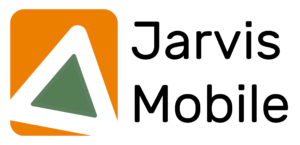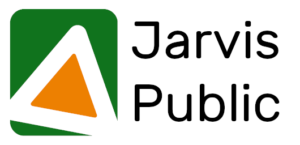Premise
The Jarvis Public system is an extension of the Jarvis Safety package of the Jarvis platform, created and designed to meet the need for local administrations (Municipalities, Provinces, Regions) to alert the population in case of emergencies and natural disasters
Traditional approach to alerting
The traditional approach to alerting involves the use of classic media channels such as TV and radio (activated only in maxi-emergencies involving provinces or entire regions) and sirens, once present in practically all the municipalities of the national territory, and which now are often not functioning due to old age and lack of maintenance. The effectiveness of this approach has proven several times in recent years, not enough to guarantee citizens an adequate level of information.
Modern approach to alerting
In recent years the relationship between people and the media has changed; more and more news (even those relating to emergency situations) travel through social networks (Facebook, Twitter) and apps (WhatsApp, Telegram).
Jarvis Public solution
Jarvis Public is part of a context that sees a great heterogeneity among the population residing in our territories; many elderly people, unfamiliar with technology, and a large part of the younger population who instead see the use of mobile devices (smartphones, tablets) as the main tool for staying informed.
For this reason, through Jarvis Public it is possible to alert the population both through “traditional” systems that can be used by all sections of the population (sirens, variable message panels), and through more innovative tools such as notifications on smartphones, text messages, apps.
Jarvis Public provides an effective multilingual warning system both for the resident population and for tourists who may find themselves residing for a limited period of time on the territory; in addition to this, the same system is also conceived as a system for disseminating information for territorial promotion activities (for example events organized by the Proloco and local associations, meetings, etc.). It therefore becomes a useful tool also for the tourism and social sector of the reference territory.
Operation
The system consists of several parts, the heart of which is a cloud platform that manages all the services connected to it in real time

The main parts of the platform are two: the management web portal and the mobile app for smartphones and tablets (available for both Android and iOS, the two main mobile operating systems). The subject resident in the municipality, as well as the tourist, you can download the Jarvis Public application on your smartphone, and go to select the area / hamlet in which it resides (in the case of the tourist, also the period of stay on the territory).
Sending alerts
The sending of alerts can be very granular, and consequently only affect a subset of the population that is the one involved in the specific phenomenon, rather than being addressed to the whole population (resident and non-resident).
It is possible to send to the population (or subgroups of it) alerts with different levels of severity, in particular:
- Information level: a warning on a situation that does not involve specific risks or dangers;
- Recovery level: a warning regarding the restoration to a normal situation with respect to a previously reported emergency situation;
- Attention level: an alert that heralds a possible danger / emergency situation;
- Danger level: an alert that predicts a certain dangerous situation, or an emergency situation already in progress.
The content of the alerts can be customized from time to time to give the population specific and precise indications; the alert can be multilingual, so as to facilitate understanding even for members of different language groups, whether they are residents or tourists.
Simultaneously with the sending of the alert, any devices such as sirens, variable message panels or other devices suitable for the alert can be activated.
Certified alert
The alerts that are sent also include a confirmation of receipt by the citizen; this information allows the administration to quickly have a check on the effectiveness of the dissemination of the alert itself, and consequently the possibility of developing compensatory strategies aimed at remedying the failure to alert (for example, sending a second alert, activating sirens , sending a civil protection team to the area involved for direct action to alert the population).
Emergency plans
It is possible to introduce the Municipal Civil Protection Plan on the platform in order to be able, at the same time as the alert is sent, to also inform the user about the correct behavior to follow in the current alert / emergency situation.
Sending information notifications
As already mentioned, the system can be used not only for sending alerts, but also for sending information messages to the population and tourists.
Notifications can be categorized by type, contain multilingual messages and any attachments.
Once downloaded the Jarvis Public app on his smartphone, the person (resident or not) will be able to choose which categories are of interest to him during registration, so that he can only receive targeted notifications and instead avoid being informed about initiatives that don’t concern him.
User engagement
In the same way as alerts, also for information notifications, it is possible for the user to indicate not only the reception, but also the will to participate in the event / event; important information for the organizers, who can thus better organize everything, or decide to enhance the promotion.
Integrations
The Jarvis Public system requires the Jarvis Safety module to function; the Jarvis Safety module presents a series of specific functions for emergency bodies such as municipal civil protection groups, firefighters, etc., but also for the administrations themselves.
Below we list some possibilities for integration into the Jarvis system.
- Jarvis Winter Services: tracking of vehicles suitable for carrying out winter services such as clearing snow, treatment with fluxes and abrasives (salt and gravel), with the possibility of reporting on the various activities carried out, certifying both their duration and actual delivery, having support document the GPS track of the vehicle.
- Jarvis Tracking: tracking of service vehicles, with safety features such as parking and geographical area and monitoring of working hours and km traveled. The position of the vehicles can be displayed in real time on the map (a useful function both during normal operation and in emergency conditions, in order to be able to identify the position of the teams and vehicles on the territory in real time).
- Jarvis Weather: integration of data from one or more weather stations located in the area, with pre-alerts and real-time alerts. In addition to the Winter Services module, it allows you to guarantee a precise and punctual supply of services, even at night and in situations where the condition of the road surface is not directly detectable. It also offers a useful tool to Civil Protection groups, informing them in real time about events such as exceptional rains, strong winds, etc.
- Jarvis Environmental Monitoring: integration of data from one or more environmental monitoring systems (specific monitoring for problems of debris flows, dangerous rocks, avalanches, areas subject to hydrogeological instability), with real-time alerts in the event of specific events.
- Jarvis Automation: management of automation systems such as opening gates, turning on lights and sirens, etc. directly from the Jarvis platform.

